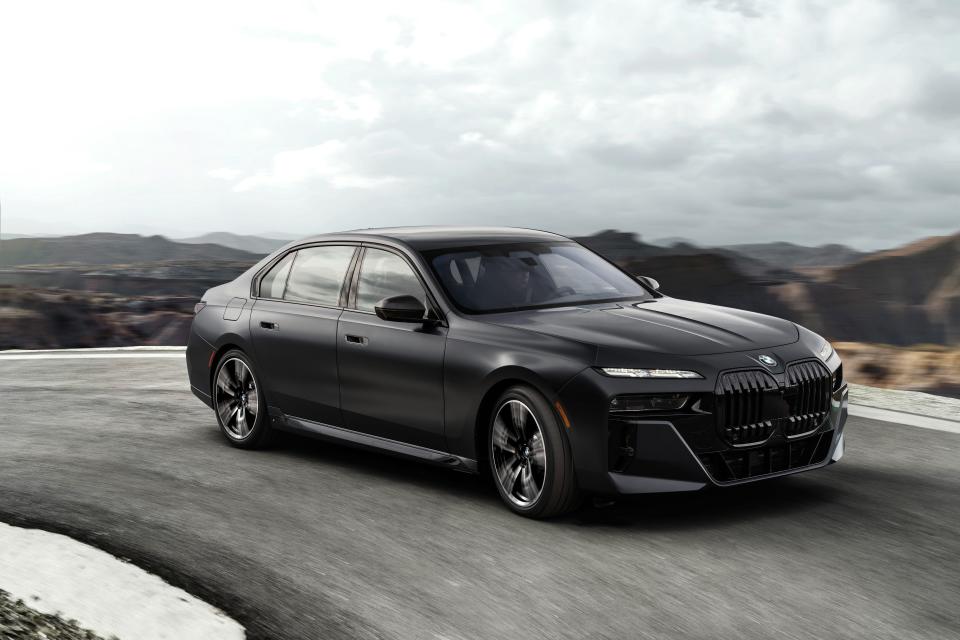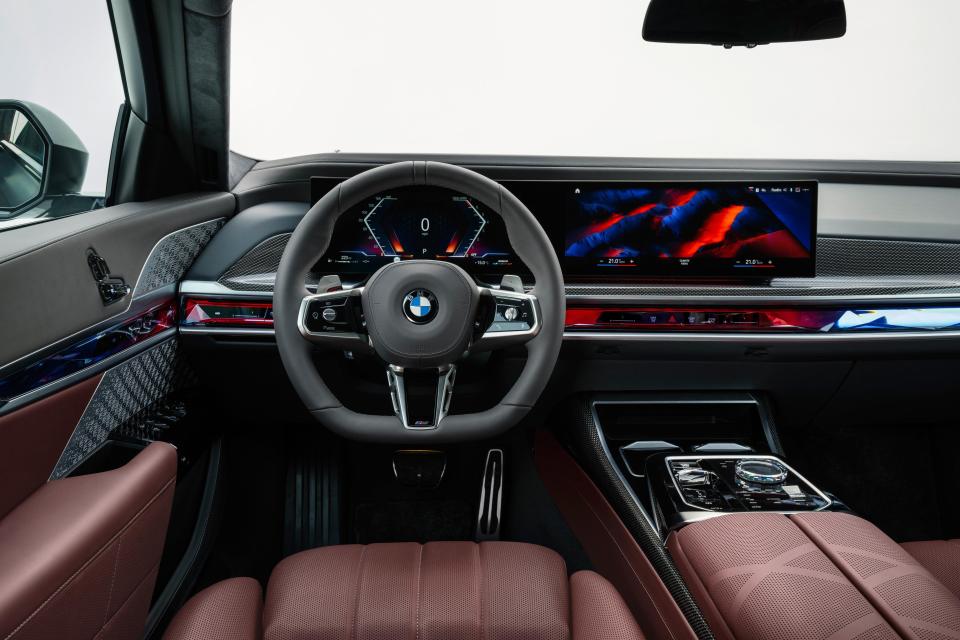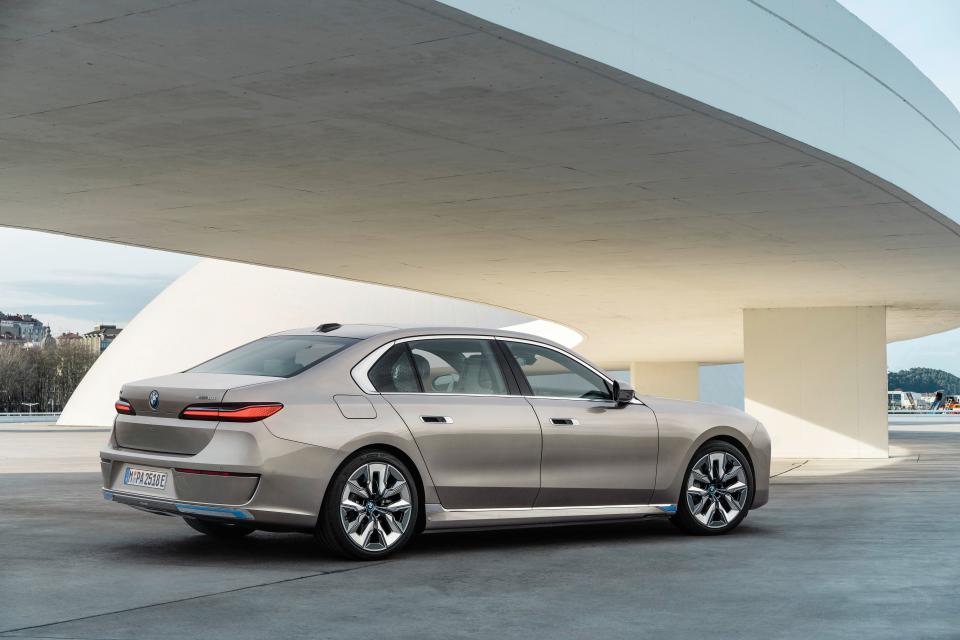BMW Offers Gas, Electric Drivetrains in Redesigned 7-Series

On sale this fall, the 2023 7-Series comes with three possible powertrains: a 536-hp electric, 375-hp straight six, and a 536-hp V8. The electric i7 will have an expected 300 miles of range.
Inside, you’ll find rich shades of Merino leather, crystalline surfaces, digital touch-panels in the doors, a curved display in front of the driver, and a 31.3-inch 8K touchscreen display for streaming Amazon Fire TV in the second row.
Pricing will start at $93,300 for the 740i, $113,600 for the 760i, and $119,300 for the all-electric i7 (plus $995 in destination charges).
It’s always a big deal when BMW unleashes a new 7-Series sedan on the world, as the Bavarian brain trust tends to save its best technology and ideas for special unveiling on the brand’s heralded flagship that only comes around once every several years.
With the arrival later this fall of the seventh generation (since 1977), BMW is clearly hedging its bets on the 7-Series, eager to embrace full electrification with the first-ever i7 while keeping a foot in the turbocharged internal-combustion camp by offering both an inline-six-cylinder and a V8. Seems like a smart strategy, to keep all doors open.

Indeed, there will be three versions of the 2023 7-Series at launch:
The rear-wheel-drive 740i with the 3.0-liter turbocharged straight-six (now dubbed B58TU2 in this application) comes with a new fuel-saving Miller-cycle combustion strategy with redesigned intake and exhaust ports and leverages 48-Volt mild-hybrid technology. Output for the 740i is pegged at 375 hp and 383 lb-ft of torque. The 48-Volt system can boost that to 398 lb-ft during brief spurts, perhaps when sprinting to 60 mph in an estimated 5.0 seconds.
The all-wheel-drive 760i xDrive with the 4.4-liter V8 comes with a new exhaust manifold, external oil cooling, reinforced crankshaft, and enhanced turbocharging. Output increases to 536 hp and 553 lb-ft of torque, with 0-to-60 mph estimated at 4.2 seconds. Both these gasoline models for the US will use BMW’s eight-speed Steptronic transmission, which works with the 48-Volt hybrid system to recuperate braking energy while generating an additional 147 lb-ft of torque and 12 hp. Energy required for the electric boost is stored in a 48-Volt battery under the luggage compartment. This is not a plug-in hybrid, but BMW has hinted the 750e xDrive PHEV will arrive later next year.
The i7 xDrive 60 (pre-orders opened this morning) is the pride of the new 7-Series, an all-electric full-size luxury sedan intended to compete with Tesla, Mercedes-Benz, Audi, and others. A motor driving the rear wheels produces 308 hp, while a motor on the front axle adds another 255 hp, for a combined maximum of 536 hp and 549 lb-ft of torque. BMW estimates its 0-to-60 mph time in 4.5 seconds (not bad for a car tipping the scales at 5917 pounds) and a top speed of 149 mph, backed by high-voltage batteries providing 101.7 kWh of usable energy. Preliminary tests suggest 300 miles of range, and DC power can be taken onboard at a rate of up to 195 kW (which equals 80 miles in 10 minutes of fast-charging). The batteries sit in the vehicle floor with a cell height of just 4.3 inches.
As crucial as powertrains are in Bavaria, there’s a lot more to be said about the interior, infotainment system, materials, styling, comfort, and technology.

The 7-Series represents a new design language for BMW, with sharp edges and creases at both ends of the sedan and headlamp housings that appear to be razor thin (integrating optional LED crystal headlights from Swarovski). Critics are bound to pan the front end for yet another freakishly large pair of kidneys, but a blacked-out grille on a European version of the 760i (pictured above) is downright handsome because the kidneys blend in.

 Yahoo Autos
Yahoo Autos 